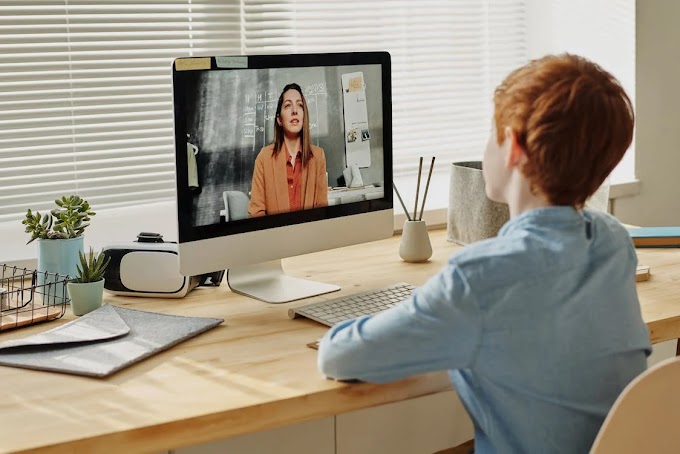When it comes to video editing, syncing the audio with the video is one of the most crucial elements to ensure a seamless and professional production. Whether you're working on a vlog, a music video, or a short film, syncing your audio and video tracks is essential to create a polished and engaging experience for your audience.
While most video editing software offers audio synchronization tools, MoviePy, a Python-based video editing library, allows you to achieve precise synchronization using simple code. In this blog, we will explore how to sync audio with video and perform audio editing with MoviePy to create high-quality multimedia content.
Syncing Audio and Video Tracks in MoviePy
The most basic task in syncing audio with video is replacing or adding an external audio track to a video. MoviePy allows you to easily load both video and audio files, and then synchronize them.
Let’s walk through the process of syncing audio and video:
1. Loading Video and Audio Files
The first step in syncing audio with video is to load the video and audio files into MoviePy. You can load the video and audio like this:
from moviepy.editor import VideoFileClip, AudioFileClip
# Load the video clip
video = VideoFileClip("your_video.mp4")
# Load the audio clip
audio = AudioFileClip("your_audio.mp3")
Now that the files are loaded, let's see how to synchronize them.
2. Setting the Audio to the Video
Once the video and audio are loaded, you can set the audio for the video. If the audio duration is longer than the video, MoviePy will automatically trim the audio to fit the video's duration, or you can manually adjust the duration.
# Set the audio of the video to the new audio clip
video = video.set_audio(audio)
# Preview the video with the synced audio
video.preview()
This will synchronize the audio track with the video. If the video and audio are already in sync, this is all you need to do!
3. Trimming Audio and Video to Match Each Other
If the audio track is longer or shorter than the video, you'll need to trim them to ensure they match. Let’s say your video is only 10 seconds long, and your audio is 20 seconds. You can trim the audio like this:
# Trim the audio to match the video's duration
audio = audio.subclip(0, video.duration)
# Set the trimmed audio to the video
video = video.set_audio(audio)
# Preview the video
video.preview()
This ensures that the audio and video are perfectly synced and have the same length.
Advanced Audio Editing with MoviePy
Besides syncing audio and video, MoviePy offers several useful features for more advanced audio editing. These include adjusting the volume, fading in/out the audio, and even applying effects like reverb or pitch shifts.
4. Adjusting Audio Volume
Sometimes the audio may need to be louder or softer. MoviePy provides a simple way to adjust the audio volume using the volumex function. Here's how you can adjust the volume:
# Increase the audio volume by 1.5x
audio = audio.volumex(1.5)
# Set the adjusted audio to the video
video = video.set_audio(audio)
# Preview the video
video.preview()
You can also lower the volume by using values less than 1 (e.g., 0.5 for half the volume).
5. Fading In and Fading Out the Audio
Another common audio effect is the fade-in and fade-out. This is especially useful for intros and outros or when the audio track starts or ends abruptly. You can add a fade effect to your audio like this:
# Add a fade-in and fade-out effect to the audio
audio = audio.fadein(3).fadeout(3)
# Set the modified audio to the video
video = video.set_audio(audio)
# Preview the video
video.preview()
The fadein function makes the audio gradually increase in volume, while fadeout will reduce the audio’s volume to zero at the end.
6. Combining Multiple Audio Tracks
If you're working with multiple audio sources, MoviePy allows you to combine them. You can layer different audio tracks by using CompositeAudioClip. Here’s an example:
from moviepy.editor import CompositeAudioClip
# Load another audio file
audio2 = AudioFileClip("background_music.mp3")
# Combine the two audio tracks
final_audio = CompositeAudioClip([audio, audio2.set_start(5)]) # Start the second track after 5 seconds
# Set the combined audio to the video
video = video.set_audio(final_audio)
# Preview the video
video.preview()
This allows you to add background music, sound effects, or other audio elements while maintaining sync with the video.
7. Exporting the Final Video
Once you're happy with the synced audio and video, you can export your final video. MoviePy allows you to save the edited video in various formats and resolutions. Here's how to export the final video with synced audio:
# Export the final video with synced audio
video.write_videofile("final_video_with_audio.mp4", codec="libx264")
This will generate a high-quality video file with the synced audio. You can adjust parameters like codec and bitrate for specific file size and quality requirements.
Conclusion
Syncing audio and video is a fundamental skill for any video editor, and MoviePy makes it incredibly easy to perform this task using Python. From basic synchronization to more advanced editing like adjusting volume, adding fades, or combining multiple tracks, MoviePy offers the tools you need to work with both video and audio seamlessly.
Whether you're working on a music video, a vlog, or a short film, the ability to sync your audio and video tracks efficiently is key to producing a polished and professional final product. With MoviePy’s simple interface and powerful features, you can easily achieve perfect synchronization and take your video editing skills to the next level.
So, give MoviePy a try, and start creating high-quality videos with perfectly synced audio!






0 Comments